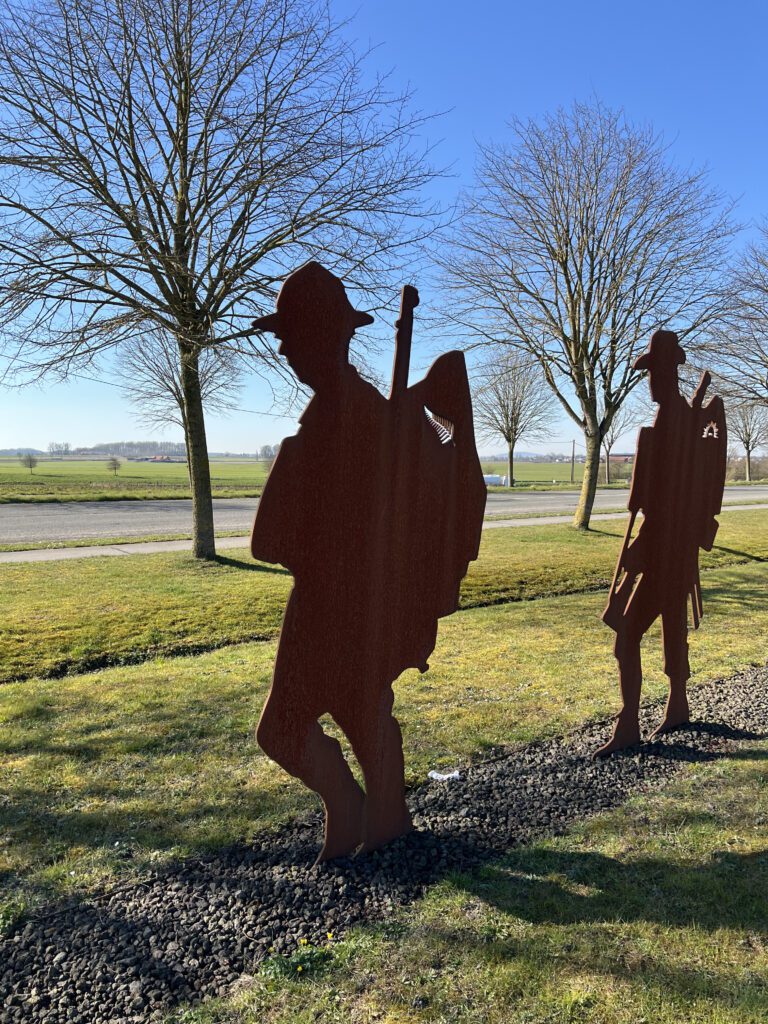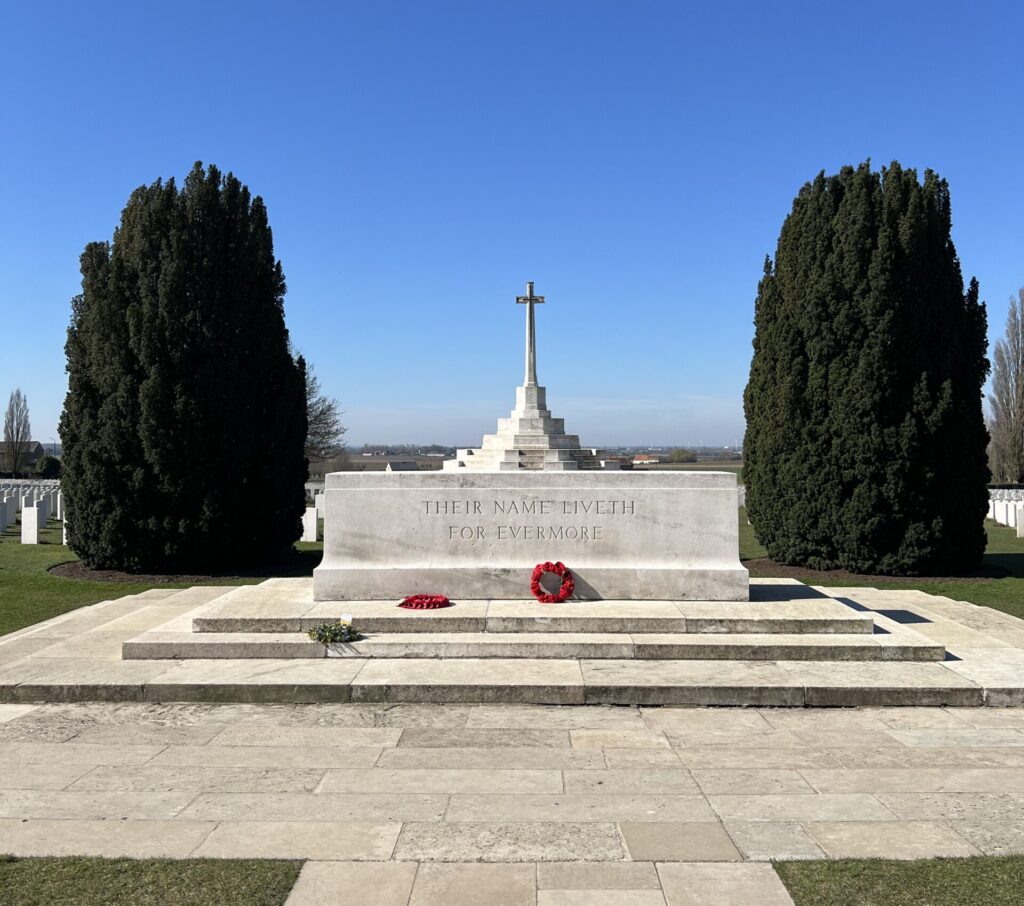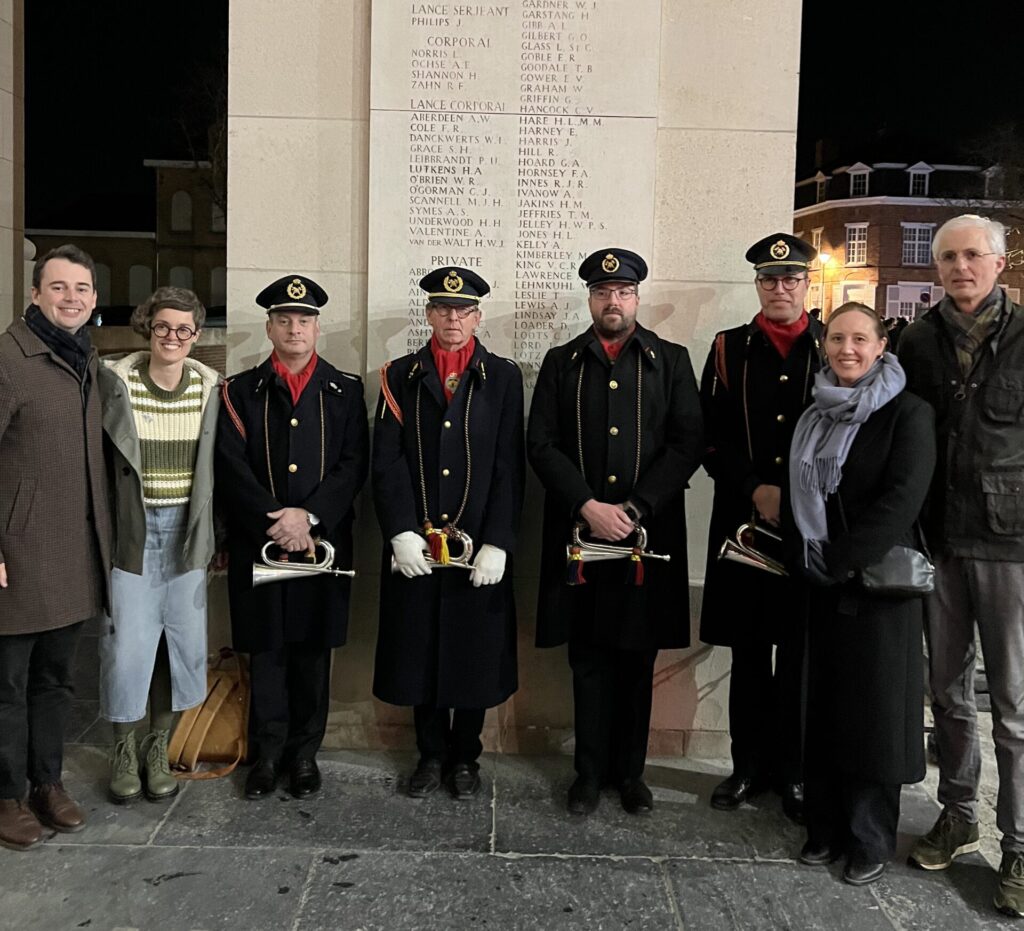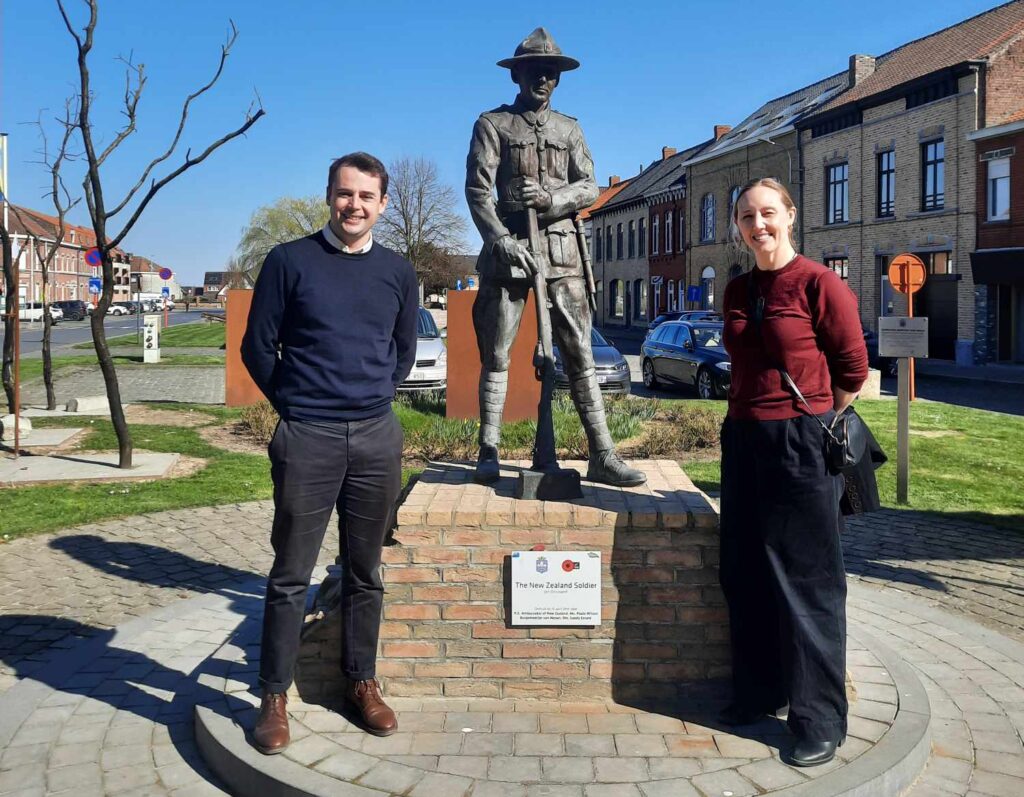New Zealand’s First World War story stretches beyond France’s border into Belgium, where our troops faced some of the most horrific conditions ever endured by soldiers. For many, the mud and blood of Flanders’ fields typify the appalling destruction of World War One, which effectively wiped cities and towns from the map. Despite this devastation, the New Zealand troops, alongside their Commonwealth Allies, fought with courage and determination, and are remembered with reverence by Belgians today. Just an hour’s drive from Le Quesnoy, the Kiwi members of the Museum staff recently made the pilgrimage to Flanders Fields to better understand the darkest period of New Zealand’s Great War story.

Elizabeth and Jacob were welcomed to Zonnebeke, home to the Memorial Museum Passchendaele 1917, by former Chairman of the Museum, Freddy Declerck MNZM and Chairperson of the New Zealand Pilgrimage Trust, Marijke Vandevyvere. Freddy, a veritable expert on New Zealand’s involvement in the Battles of Ypres, whipped the team through the countryside between Passchendaele and the town of Ypres, condensing his usual 8-hour tour into just 90 minutes. Marijke, who was kind enough to organise the busy day for us, provided a personalised touch by introducing Elizabeth and Jacob to John Stevens, a New Zealand soldier buried at Tyne Cot, the largest Commonwealth War Grave Commission cemetery on Earth, the final resting place of more than 11,000 men. Marijke “met” John over a decade ago and has since made a mission of remembering him – she recently made her second trip to Aotearoa to visit his descendants.
Next, the team went to Poperinge to visit Talbot House, an “Every Man’s House” which played host to Allied soldiers on leave from the frontlines. Simon Louagie, Manager of the House and Board Member of the New Zealand Pilgrimage Trust, recounted all kinds of stories of the hijinks which took place at this amazing tribute to life behind the front.
From there, the team met Steven Reynaert MNZM in Messines, the site of one of the New Zealand soldiers’ finest victories of the War. Steven, another member of the Pilgrimage Trust, showed Jacob and Elizabeth the many monuments to our soldiers in the town, which has been twinned with Featherston, Wairarapa since 1975.


Finally, Elizabeth and Jacob went to Ypres to take part in the Last Post ceremony at the Menin Gate, a nightly occurrence since 1928. Meeting Marijke again, the trio was welcomed to Menin Gate House by Chairman, of the Last Post Association, Benoit Mottrie MNZM. Benoit explained the history of the Last Post ceremony, including that the ceremony has been held now over 30,000 times. In a twist of fate, the Exhortation was read by a New Zealander serving with the British Army. The ceremony was a fitting end to a very special day.
Te Arawhata is just an hour’s drive from these important sites in Belgium. If you are interested in visiting Le Quesnoy or Ypres, then an extension of your pilgrimage to the other is well worthwhile.
